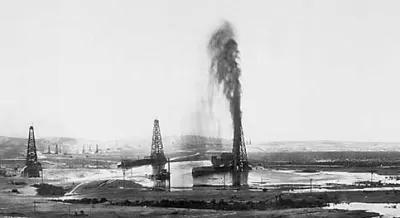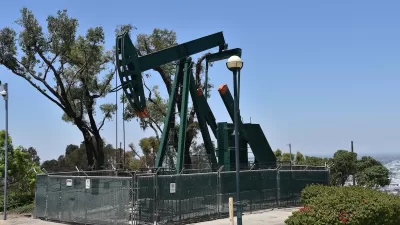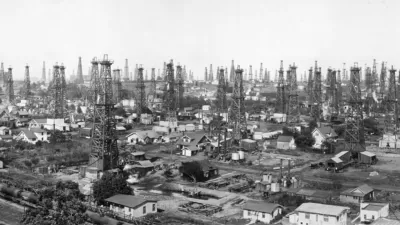The oil-rich county hopes to boost its economy with a revised plan for new drilling after a state court struck down a 2015 ordinance.

Kern County, the center of California's oil industry, is poised to approve a "revised ordinance supported by the influential petroleum industry that creates a blanket environmental impact report to approve as many as 2,700 new wells a year." The 87 revisions were necessary "after a state appeals court ruled last year that a 2015 ordinance violated the California Environmental Quality Act by not fully evaluating or disclosing environmental damage that would occur from drilling," reports Brian Melley in the Los Angeles Times. "New drilling permits were not allowed while the county returned to the drawing board."
The new plan includes "creating larger buffers between homes and wells, muffling noise during drilling and putting a stricter limit on the number of new wells." County officials claim that the limits simply signify a "worst case scenario," as "actual permit numbers in recent years were below the cap." Supporters argue that new wells would "support high-paying jobs and produce oil under some of the most stringent environmental laws, instead of relying on dirtier imports."
Environmental groups expressed concern about the impact new drilling would have on the "notoriously bad air pollution in the San Joaquin Valley." Farmer Keith Gardiner, who opposes the plan, claims it "still falls short of providing protection for valuable agricultural land."
Opponents also disagree with using blanket EIRs to approve multiple wells, saying that "a one-size-fits-all approach didn’t address different factors that varied by location, such as habitat or proximity to neighborhoods." If the revised ordinance passes, groups including the Center on Race, Poverty and the Environment plan to return to court.
FULL STORY: Kern County could permit tens of thousands of new oil wells over the next 15 years

Planetizen Federal Action Tracker
A weekly monitor of how Trump’s orders and actions are impacting planners and planning in America.

Maui's Vacation Rental Debate Turns Ugly
Verbal attacks, misinformation campaigns and fistfights plague a high-stakes debate to convert thousands of vacation rentals into long-term housing.

Restaurant Patios Were a Pandemic Win — Why Were They so Hard to Keep?
Social distancing requirements and changes in travel patterns prompted cities to pilot new uses for street and sidewalk space. Then it got complicated.

In California Battle of Housing vs. Environment, Housing Just Won
A new state law significantly limits the power of CEQA, an environmental review law that served as a powerful tool for blocking new development.

Boulder Eliminates Parking Minimums Citywide
Officials estimate the cost of building a single underground parking space at up to $100,000.

Orange County, Florida Adopts Largest US “Sprawl Repair” Code
The ‘Orange Code’ seeks to rectify decades of sprawl-inducing, car-oriented development.
Urban Design for Planners 1: Software Tools
This six-course series explores essential urban design concepts using open source software and equips planners with the tools they need to participate fully in the urban design process.
Planning for Universal Design
Learn the tools for implementing Universal Design in planning regulations.
Heyer Gruel & Associates PA
JM Goldson LLC
Custer County Colorado
City of Camden Redevelopment Agency
City of Astoria
Transportation Research & Education Center (TREC) at Portland State University
Jefferson Parish Government
Camden Redevelopment Agency
City of Claremont





























